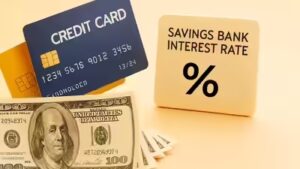
What the Fed’s Rate Cuts Mean for Credit Card Borrowers
In a surprise (but welcome) move, the Federal Reserve just reduced interest rates for the first time this year. Although the objective is to stimulate the overall economy, this had already sent shock waves through the financial world — including your wallet.

These rate cuts could provide little relief for millions of American consumers who are carrying credit card debt. But the effects are neither felt instantly nor uniform across all Americans. And in this post, we’ll lay out how the Fed’s rate cuts function and legs for them to stand on — how your credit card interest rates may be impacted by their moves, and what borrowers should do next.
📉 Why Did the Fed Cut Rates?
The Federal Reserve (the “Fed”) changes interest rates to manage inflation and stabilize the economy. When growth in the economy slows or the labor market weakens, Fed policy makers have often cut the federal funds rate to make borrowing less expensive and encourage spending.
In July 2025, the Fed cut its federal funds rate target by 25 basis points on the hypothesis of a cooling labor market, lower-than-expected inflation and “worrisome” consumer spending. It reverses the tighter monetary policy of 2022–2024, when the Fed raised rates aggressively to combat inflation.
🔄 What Do Fed Rate Cuts Mean for Credit Card APRs
While fixed-rate loans (like most mortgages) offer a stable interest rate, credit cards most often have variable-interest rates. They are directly related to the prime rate, which is indebted to the federal funds rate.
So when the Fed cuts rates:
The prime rate typically plunges within days.
Card issuers reprice to adjust their APRs.
Cardholders could experience slightly lower interest charges on their balances.
Example:
Let’s say your credit card has a variable APR of 21.99%. If the Fed lowers rates by 0.25%, your new APR might be closer to 21.74%, if your issuer follows suit.
It’s a small difference — but for someone with a hefty balance, even tweaking rates by a quarter of a percentage point can shave dollars off the monthly interest.
💡 How Much Will Borrowers Be Helped?
Unfortunately, rate cuts do not translate to massive reductions in credit card APRs. Here’s why:
Credit card rates are already steep. The average APR on credit cards is sitting around 20.5% to 24% — one of the highest levels in history as of mid-2025.
Lenders do not necessarily pass along the full cut to consumers. Some may cut rates selectively or stretch out the timetable.
New applications could still bear high rates, especially for borrowers with fair or poor scores.
Still, every little bit helps, particularly for those who carry a balance month to month. Consider: If you owe $5,000 at 24% APR (!), a 0.25% reduction could save you about $10 a month — more if the Fed cuts again.
🧠 What If You Have Credit Card Debt?
If you’re carrying a balance, though, now is a good time to take some savvy steps.
✅ 1. Request a Reduced Rate From Your Issuer
Rates are getting cut by the Fed, so you have more power here. Contact your credit card issuer and request a lower APR – especially if:
You’ve had this card for a minute
You are paying your debts on time
You’ve improved your credit score
Most issuers are happy to talk, especially in a competitive lending environment.
✅ 2. Consider a Balance Transfer
If you haven’t reduced your APR, consider 0% APR balance transfer offers. These enable you to transfer your balance to a new card and pay no interest for 12-21 months — so you can stop paying it down ASAP.
Tip: Find cards with no transfer fee (though low intro offers work). Just make sure you pay off the balance before the promotional period is over.
✅ 3. Accelerate Debt Payments
Do the same with any savings from a geometrically reduced interest rate: Increase your monthly payments — the smallest bump helps.
For example:
Paying it down at $300/month on a $5000 balance 21.99% APR = ~22 months to pay off
Now Pay $350/month = debt free in ~17 months
The fewer months you’re paying, the less interest you pay and that’s more money in your pocket.
✅ 4. Check Your Credit Utilization
Lower APR would be nice, but credit utilization is still a big player in your credit score. She said that ideally, you should try to ensure that your card balances are never more than 30% of your limit — or lower if at all possible.
📊 What About the Next Fed Rate Cuts?
“If inflation does cool as expected early this year and the job market doesn’t start to tighten again, it is reasonable to expect that more cuts would come later in 2025,” many economists forecast.
If that occurs, borrowers might find themselves:
Even lower credit card APRs
Better balance transfer offers
Easier access to personal loans, refinance opportunities
But you can’t sit around waiting on the Fed to solve your debt problem. Leverage the present environment as a chance to better your finances.
⚠️ Words of Warning: Don’t Buy Too Much
“Lower rates can be tempting — but recall:
Because borrowing is cheaper, doesn’t mean that you should borrow more.
Many households are already cut to the bone. Before you take out a card, ask yourself:
Is this a need or a want?
Can I pay off the balance in full this month?
Is this going to make my financial situation better or worse?
📝 Final Thoughts
The Federal Reserve’s recent rate cut is good news if you have a variable-rate mortgage, but it won’t do much for other borrowers. Interest rates on credit cards are still high and good credit management is still crucial.
Here’s what you can do now:
Track your APRs down and appeal to get the maximum (challenge)
Explore 0% balance transfer cards
Concentrate on aggressive debt repayment
Keep your spending in check
Keep an eye out on new rate changes
And again: Every dollar you save in interest is a dollar you can apply to building wealth.
Our Post


Smart Money Moves: Financial Tips Every American Should Know

